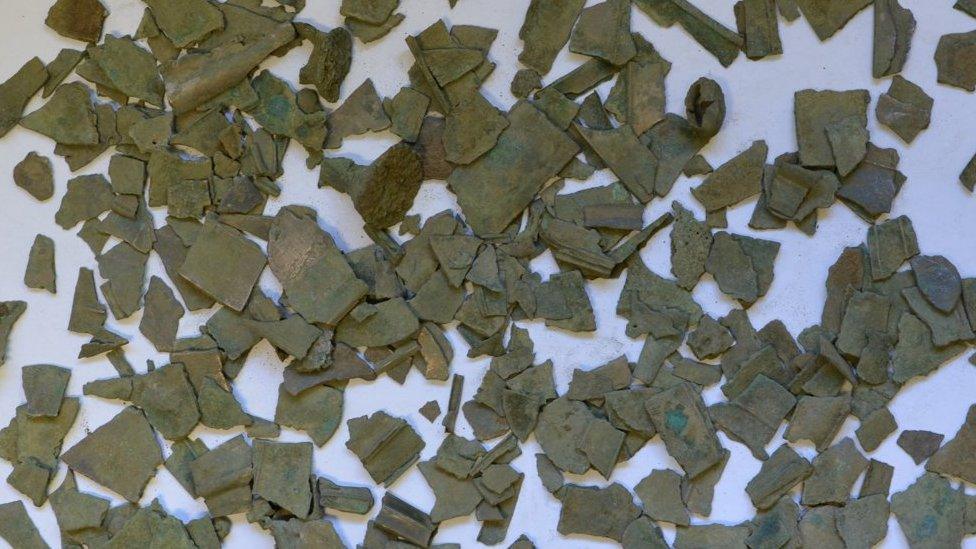Sophistication of Bronze Age settlement revealed

Chris Thatcher led a team of archaeologists who excavated the farmstead last year
- Published
The residents of a newly revealed Bronze Age farm were "very sophisticated" and not "living in squalor", an archaeologist said.
Chris Thatcher said there was "an exciting level of preservation" about finds made on the 3,000-year-old settlement unearthed in Ipswich.
On Wednesday, Suffolk County Council announced the discovery of a cremation cemetery with 18 burials, "substantial" pottery items and two roundhouses.
Thanks to carbon dating, experts know the settlement lasted at least 400 years.
"This means many generations of people were living within that landscape," the Oxford Archaeology senior project manager continued.
"We can also see shifting cultural practices and that's why sites like this, with a decent block of evidence that we can confidently date, are so significant."
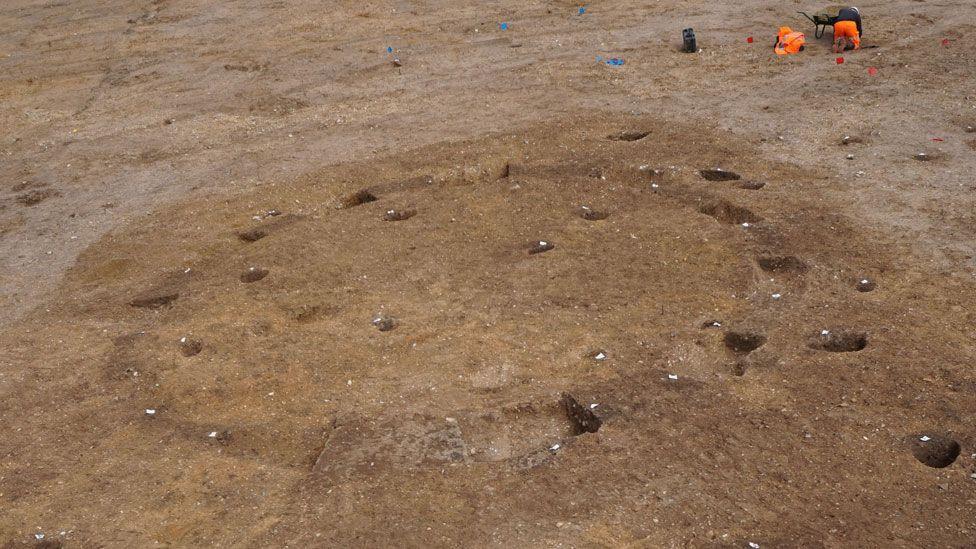
Finds included the remains of roundhouses about 9m (29ft) in diameter
The small farm was unearthed ahead of the development of Europa Way, a new road in Ipswich.
The land, near Bramford and Sproughton, is boxed in by a housing estate, an industrial estate, a railway line and the A14.
Discoveries include:
The postholes of two roundhouses, numerous four and six-post structures and two ring gullies
Ceramics from circa 1150-800BC, fragmented fired clay weights, a clay spindle whorl (used during the spinning of yarn) and evidence of pottery production
Worked flints - including a rare example of a flint quern, used for hand-grinding grain into flour
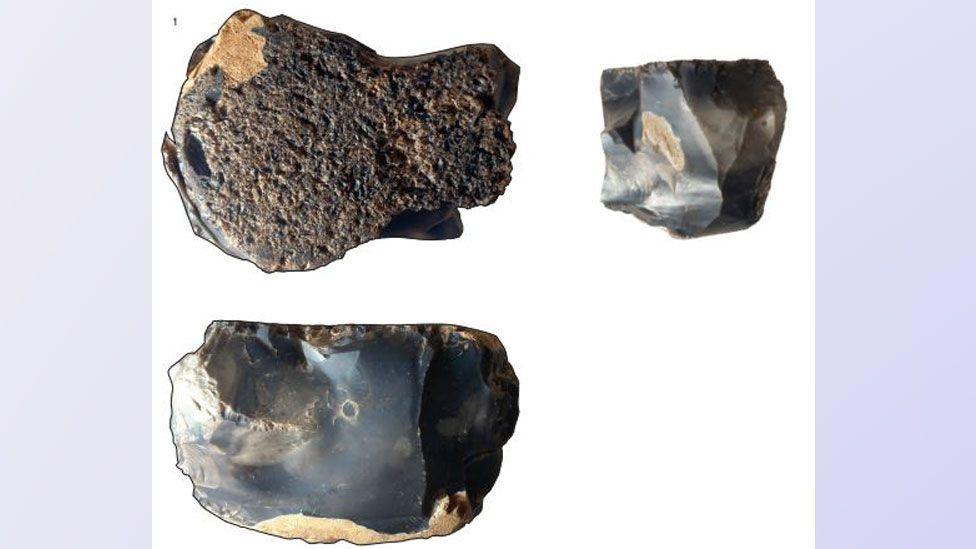
Evidence including a flint quern revealed the residents made most of their food, raised or grown on their farm
The further back in pre-history, the harder it is to find everyday evidence of how people lived, said Mr Thatcher.
"This site offers really tangible evidence, we can see where people lived, where they worked and where they buried family members," he continued.
The burials and the settlement were broadly contemporaneous, dating from about 1200 to 800BC.
Earlier Bronze Age people buried the remains of loved ones in monuments and barrows, so the discovery of a cemetery on the site marks a change in practice.
Mr Thatcher said: "Culture is always changing and shifting within any period, but what we're seeing here is a good example of this shift in the mid-Bronze Age."
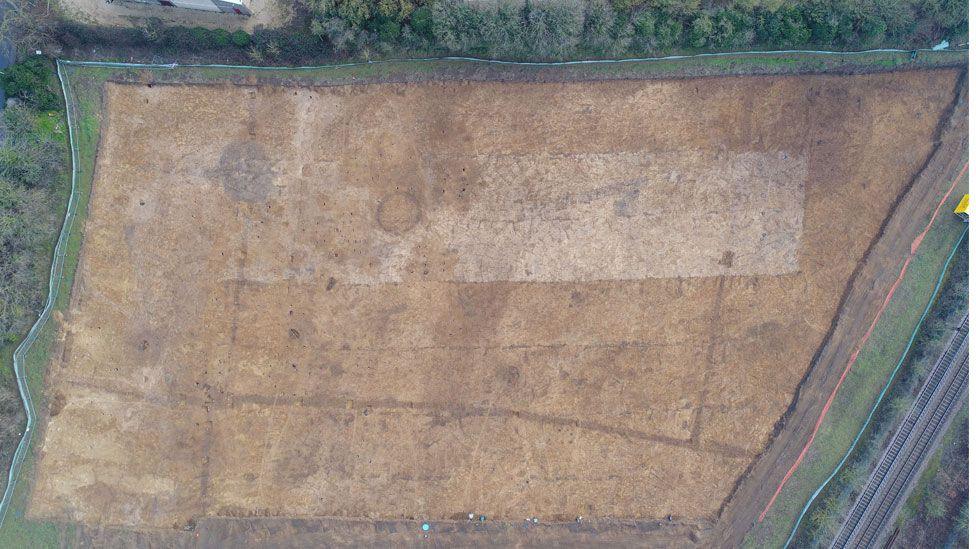
While they were very self-sufficient, they were not isolated but would have traded and moved their livestock around to keep it viable, said Mr Thatcher
The farm relied upon a mixed agricultural economy, including producing its own wheat and barley, cattle breeding, as well as raising a few sheep or goats and pigs.
"People are very sophisticated, we have always wanted to have made lives better, been inquisitive and traded - we want nice things - and we do that through innovation," he said.
"These residents lived in large single storey homes of about 9m (29ft) in diameter fit which could fit a family - they are not living in squalor but in relatively comfortable."
Get in touch
Do you have a story suggestion for Suffolk?
Follow Suffolk news on BBC Sounds, Facebook, external, Instagram, external and X, external.
Related topics
- Published16 April

- Published26 April 2024
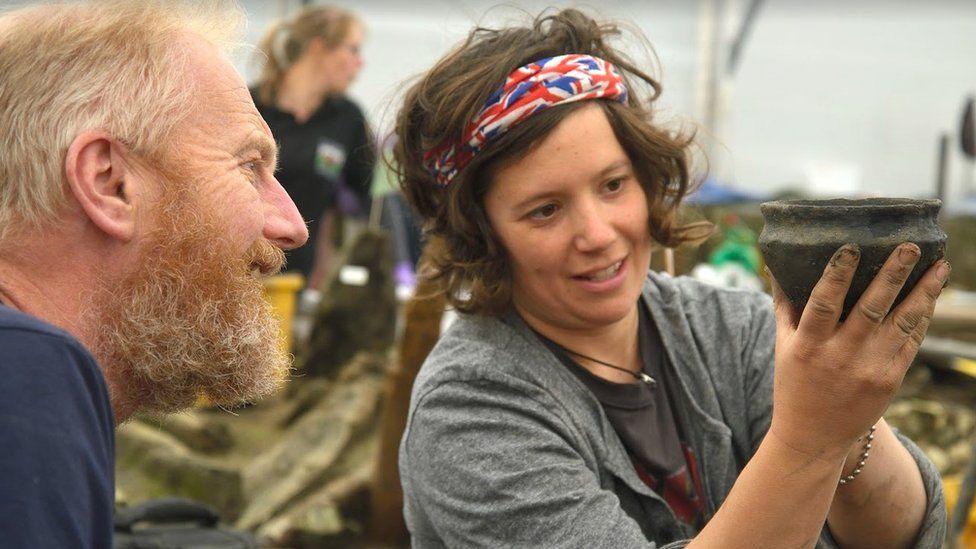
- Published15 March 2023
